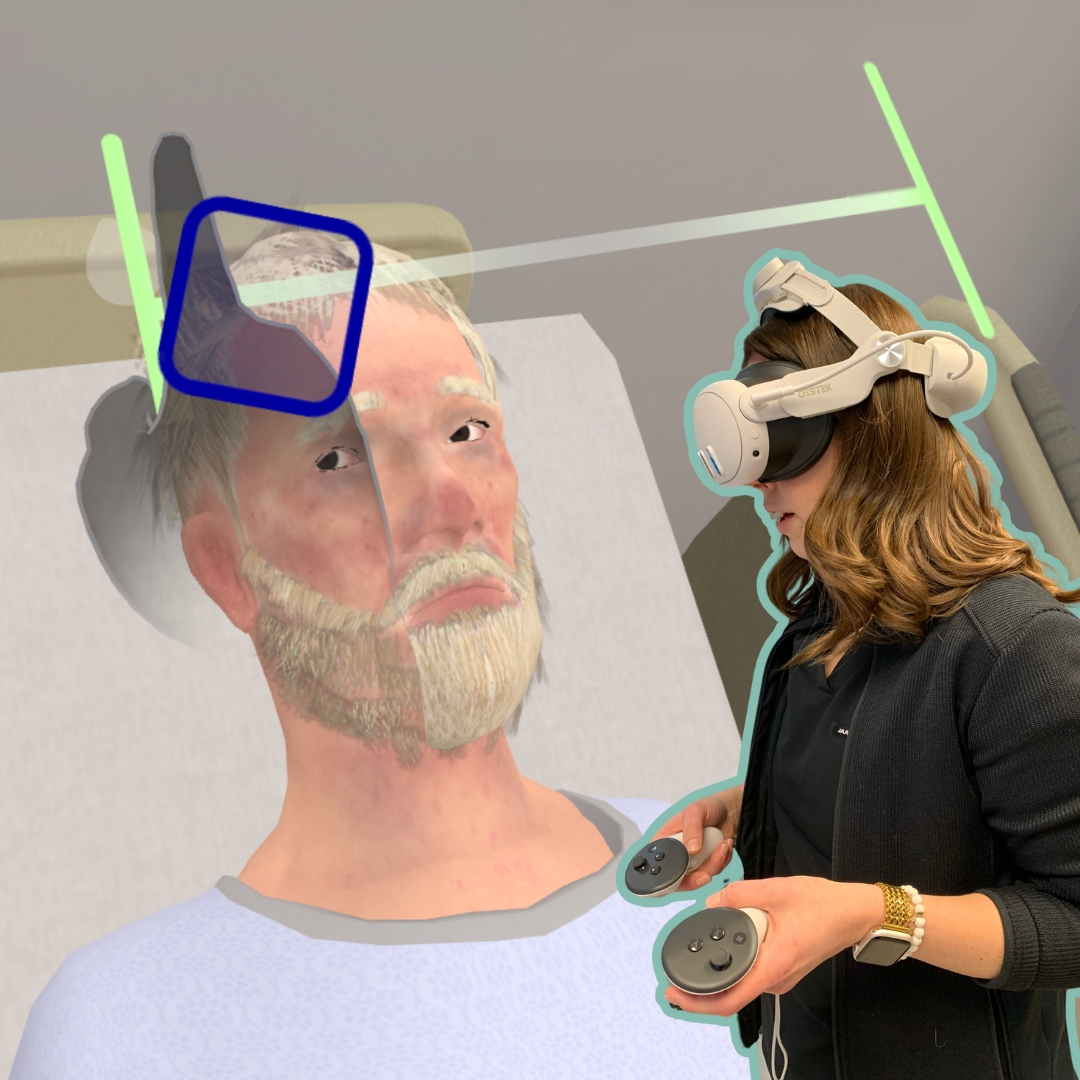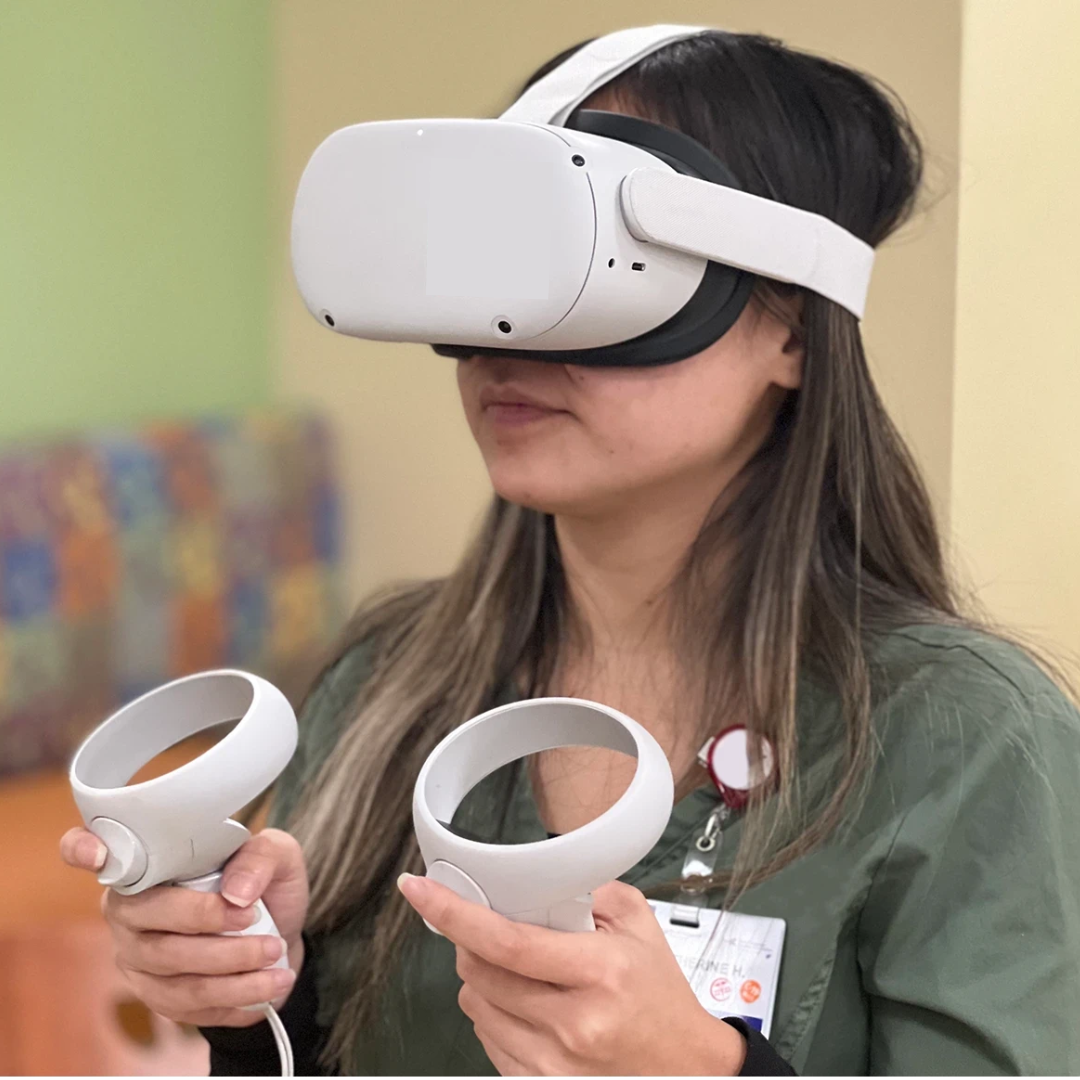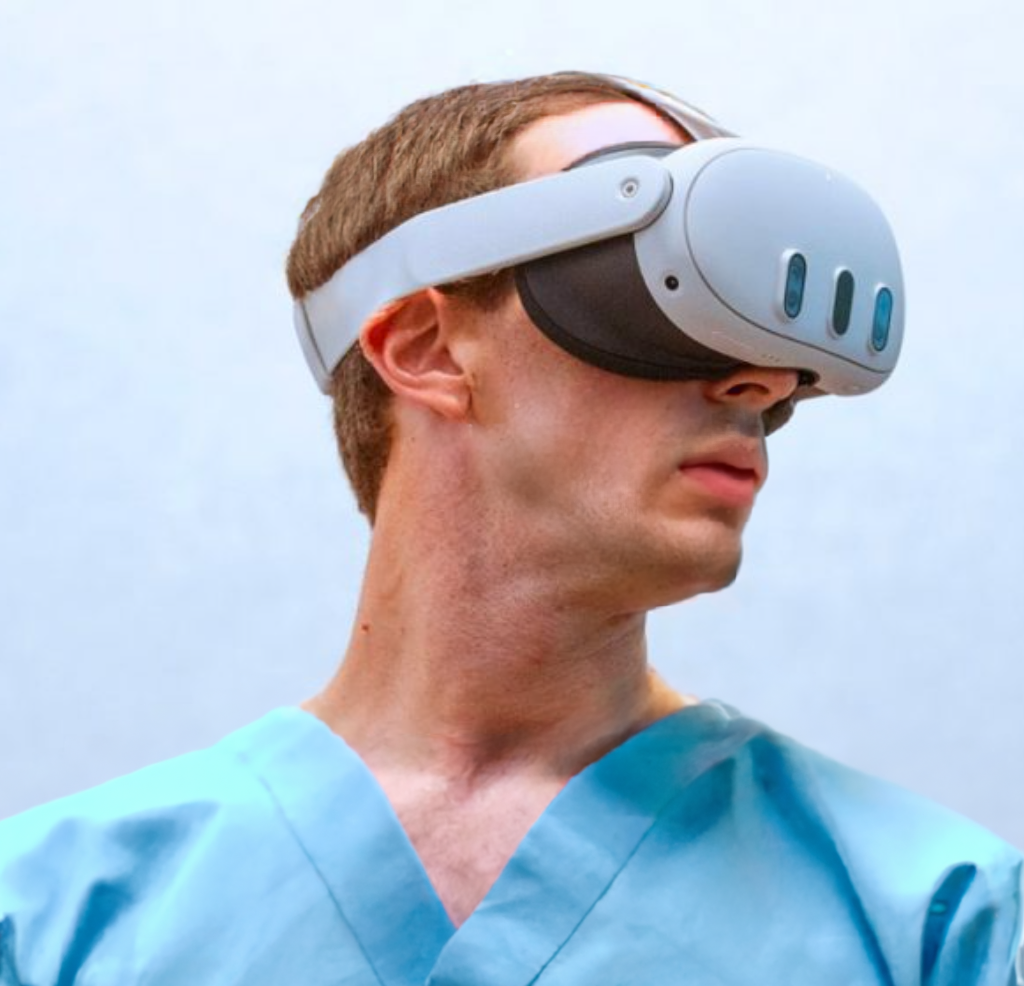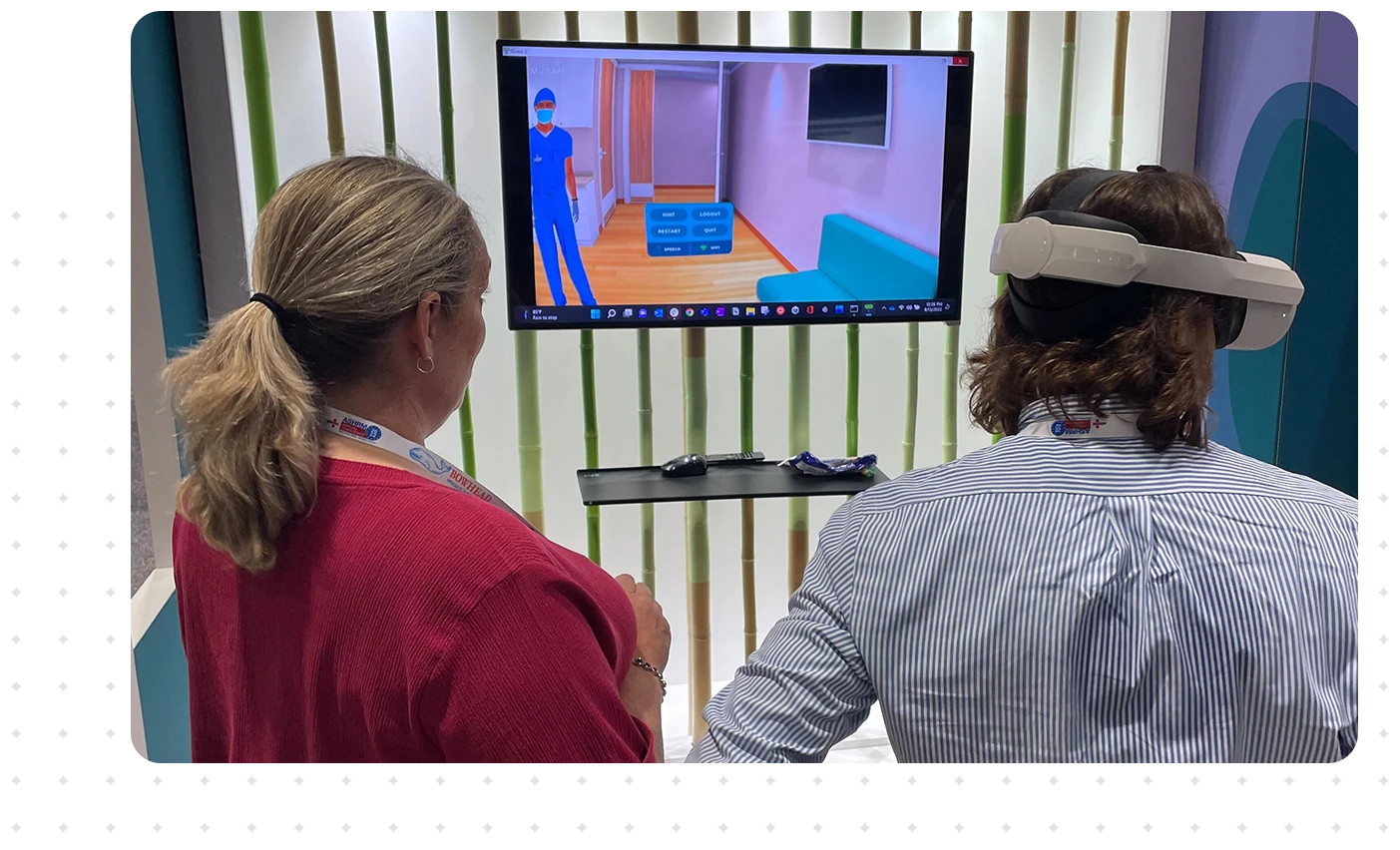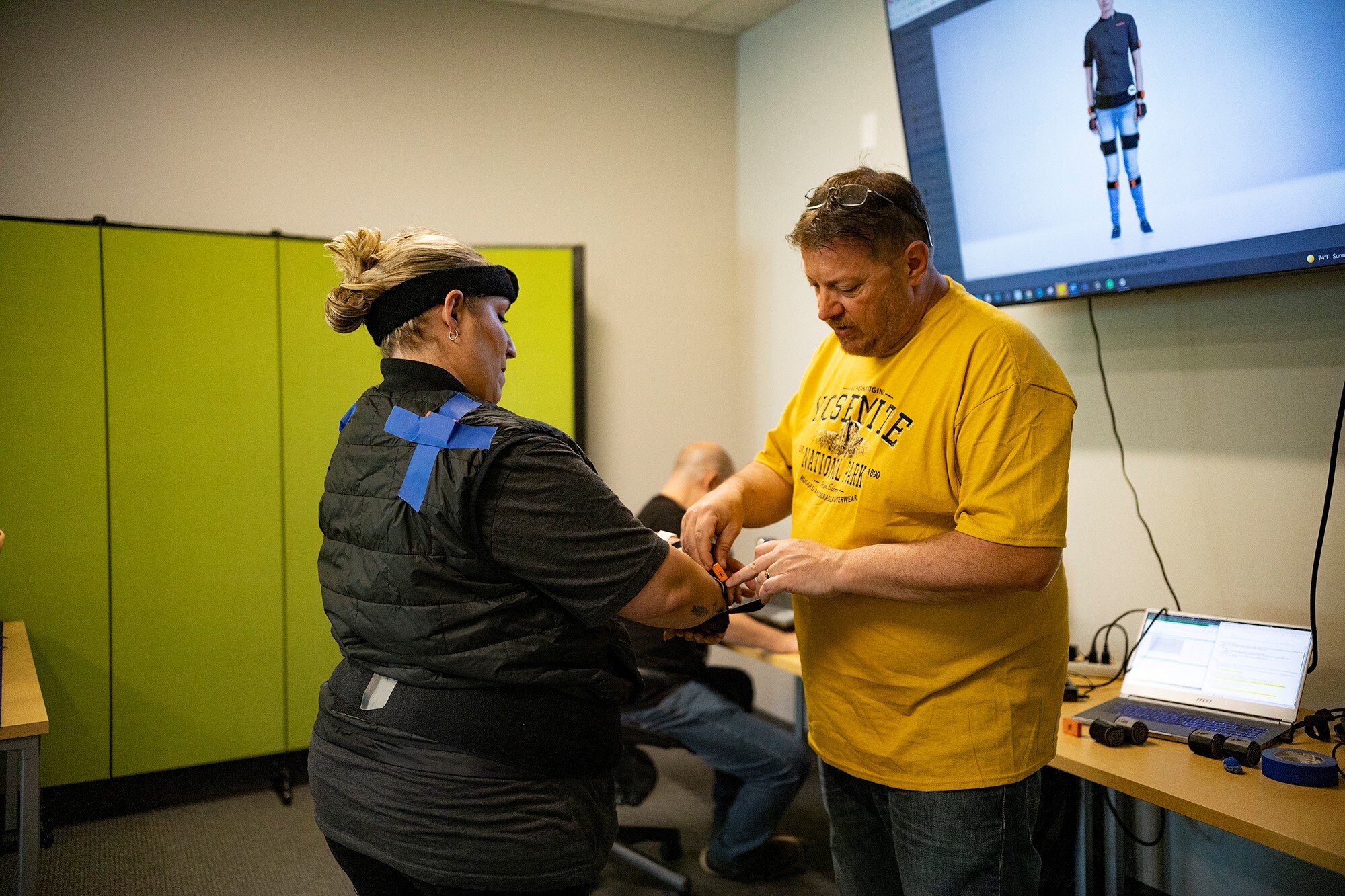
Get to Know the Health Scholars Art Team
Published April 19, 2023
Get to Know the Health Scholars Art Team
We recently sat down with several members of the Health Scholars Art team to hear about their favorite part of work, what drives them to daily success, and more.
This team creates everything we use in our simulations, from the environments and props to the characters and animations. It’s through their work that Health Scholars delivers truly immersive VR training for healthcare organizations – encompassing the sights, sounds, and energy of realistic emergency situations.
Let’s hear from Alex Garvin, Ashley Aucoin, Ian Bawn, and John Lindemuth.
Alex Garvin
Tell us your name, title, and how long you’ve been with Health Scholars.
My name is Alexander Garvin. I am a Mid-Level 3D Artist here at Health Scholars and have been with the company since March 2020.
What is your typical workday like?
A typical workday for me as a 3D Artist involves first gathering references for the art I am going to create based on the direction I receive from my superiors. Once I gather the references, I use the various software provided to me, such as Maya for modeling, ZBrush for sculpting, and Substance Painter for texturing, just to name a few.
What got you into virtual design?
I have always had a passion for drawing things, so when I decided to go to college, I wanted to take that next step from 2D and venture into 3D art. From there, as I practiced and grew, I landed a job here at Health Scholars, where 3D Game Art and Virtual Reality were proven to be a seamless fit.
Why are you passionate about Health Scholars? What drives you?
I am passionate about Health Scholars because I get to do what I love creating 3D art, but instead of video games, it helps save lives, which makes it that much easier to love what I do here.
What’s one thing someone might not guess about your job?
One thing someone may not guess about my job, or any art job, is that there is no hand-holding in the arts. You have to understand a lot of structure to make something out of nothing, and everything is 100% non-automated and controlled by the artists. Sometimes people hear “digital” and may be confused about what exactly that entails.
What is your favorite Health Scholars application?
My favorite application is still in production but involves extra anatomical parts that were really fun for me to learn and work on.
Who are your favorite avatars?
My favorite avatar is from another application in production, but I felt my work on that avatar gave some of the best results I’ve gotten since working at Health Scholars.
What are some of your favorite moments when creating?
My favorite moments when creating have to be when I try something new, and the results come out the way I want them to. It’s something about “nailing it” that gives a great sense of accomplishment for now, and then I have to get to the next step.
Ashley Aucoin
Tell us your name, title, and how long you’ve been with Health Scholars.
My name is Ashley Aucoin, and I am a Technical Animator with almost three years of experience working for Health Scholars.
What is your typical workday like?
As a Technical Animator, my typical workday involves using a 3D program called Maya to create complex character and prop rigs, scripting tools for our animators, and creating lip-sync solutions for our characters. In addition to rigging, my work also involves tasks such as troubleshooting discrepancies and optimizing workflows between Maya and Unity and collaborating with other team members to ensure that all the different assets are working as intended. Overall, my work as a Technical Animator is dynamic and varied, and no two days are ever the same. I love the creativity and problem-solving that comes with this role, and I am always looking for ways to improve my skills.
What got you into virtual design?
I got into virtual design because I have always been fascinated by the power of technology bringing ideas to life. I started in AutoCAD when I originally went to college for Mechanical Engineering at LSU, and after I took my first elective course in animation, I was hooked. As I pursued my education and career in this field, I became increasingly interested in how 3D animation and visualization could be used to communicate complex ideas and concepts in a clear and engaging way. I saw the potential for virtual design to change how we learn, train, and communicate, and I wanted to be a part of that.
Why are you passionate about Health Scholars? What drives you?
I love that as a Technical Animator at Health Scholars, I have the unique opportunity to contribute to the development of innovative healthcare solutions that have the potential to make a real difference in people’s lives.
What’s one thing someone might not guess about your job?
As a Technical Animator, one thing that someone might not guess about my job is the extent to which we are responsible for bridging the gap between the technical and creative.
What is your favorite Health Scholars application?
My favorite apps to work on were the Pediatric Emergencies. They involved a lot of early R&D with the team to bring them to life, and to know they will help out children in these critical conditions that are sometimes difficult to detect makes them even more significant.
Who are your favorite avatars?
The rig from our Shoulder Dystocia app has to be one of my favorites. I loved the challenge of finding the best solution for a difficult character rig that involved complex props, blend shapes, and interactions.
What are some of your favorite moments when creating?
Most of my favorite moments while creating are collaborative! We all bring our own skills and perspectives to the table, and it’s exciting to see the final product come together due to our teamwork.
Ian Bawn
Tell us your name, title, and how long you’ve been with Health Scholars.
My name is Ian Bawn. I’m a Senior Animator at Health Scholars, and I’ve been here since May 2019.
What is your typical workday like?
My work mostly revolves around animating computer characters who are performing medical management. We use motion capture as the foundation for our animations, and I help to plan, direct, and record those in-house. I then edit that motion data on our characters and animate their props so that everything moves and performs smoothly and accurately.
What got you into virtual design?
I’ve loved flipbooks, puppets, and drawing for as long as I can remember. After first pursuing computer science, I went to school for animation and illustration. There I became interested in experimental and practical applications of animation. I was working at an art college when Health Scholars contacted me about coming to animate for them. They put me in virtual reality for the first time, and I was instantly intrigued.
Why are you passionate about Health Scholars? What drives you?
I had heart disease as a kid and regularly went to see a cardiologist, so I grew up with an added awareness of my own health and how important it is to receive good care. Knowing that my work helps improve the training clinicians receive, which ultimately helps save lives, drives me daily. I’m also driven by our company’s culture of learning and finding solutions.
What’s one thing someone might not guess about your job?
There is a lot of juggling, organizing, and thinking ahead needed. While working on one animation or project, you must also strategize and plan for what comes next and how multiple pieces will fit together.
What is your favorite Health Scholars application?
The pediatric training we’ve created had the biggest impact on me. There was something extra meaningful with those apps knowing they would help care for kids. It was also fun to create bloopers of our child characters dancing.
Who are your favorite avatars?
Sonia is my favorite because we often describe her as salty, but I think maybe she’s just misunderstood. I also appreciate the female partner in Shoulder Dystocia, which represented a same-gender couple having a child together.
What are some of your favorite moments when creating?
I love when I stop fighting an animation that won’t cooperate, and I either start over or strip a chunk of it out to redo. My frustration turns to liberation, and I become more confident in taking a new approach.
John Lindemuth
Tell us your name, title, and how long you’ve been with Health Scholars.
Three years, two days, 12 hours, 32 seconds.
What is your typical workday like?
I like to get started early! I’m usually at my workstation by 7:30 or 8:00 am. I attend meetings between 9 am and 10 am, catch up on email, or have quick conversations with team members from 10-10:30. There’s an Art mob (art team meeting) from 10:30 – 11 am daily to sync up on ongoing work, unblock or review current work. Then from 11 am – 5 pm, I have meetings or production work.
What got you into virtual design?
The impressiveness. Virtual reality takes you to another space like no other medium.
Why are you passionate about Health Scholars? What drives you?
The opportunity to work with a team to create something that has life-changing potential is just amazing. Before Health Scholars, I spent 20 years making games. While game development has merits, this work is fulfilling in a way a game could never be.
What’s one thing someone might not guess about your job?
Artists are not vending machines! While we may have a known, repeatable approach to making content, each asset starts from an idea and has its own unique challenges. The most complex pieces have stages, and each stage requires a skilled, experienced artist at the helm to get the desired result. It takes a lot of coordination, teamwork, and dedication to succeed.
What is your favorite Health Scholars application?
Fire in the OR! I like the interaction used while teaching skills. Next level!
Who are your favorite avatars?
Michael. Michael takes no flack from anyone.
What are some of your favorite moments when creating?
It’s got to be team interactions when brainstorming, teaching, or learning with team members during development and seeing final results.
Want to Work with Us?
Our mission is to transform training for healthcare professionals through virtual reality, and that’s just what our Art team and others do every day.
We are passionate about creating true-to-life environments that adequately prepare nurses and clinicians for emergency situations in Labor & Delivery, the Operating Room, and Emergency Care.
Interested in joining the Health Scholars team? Check out our open positions or get in touch with us.

